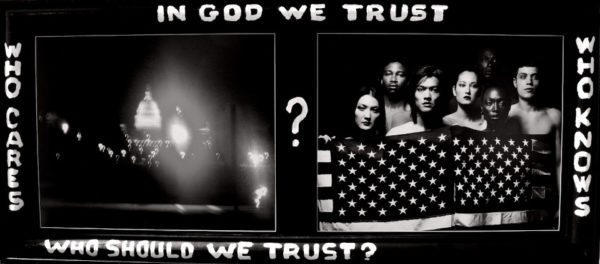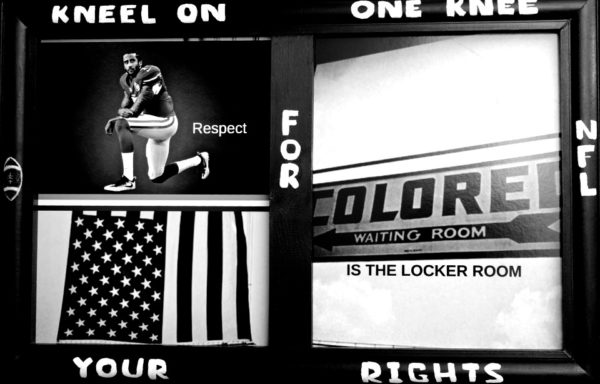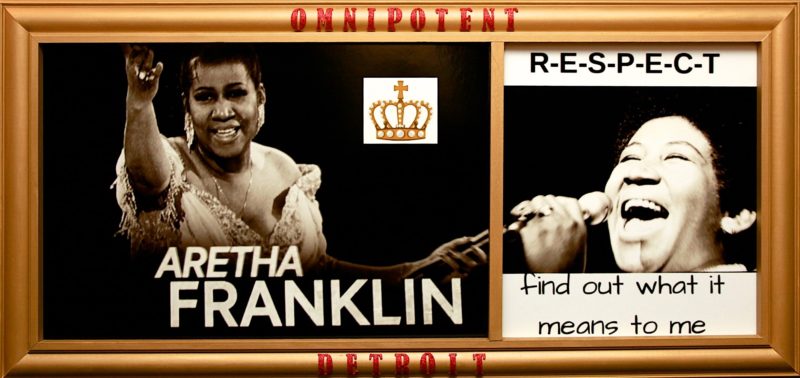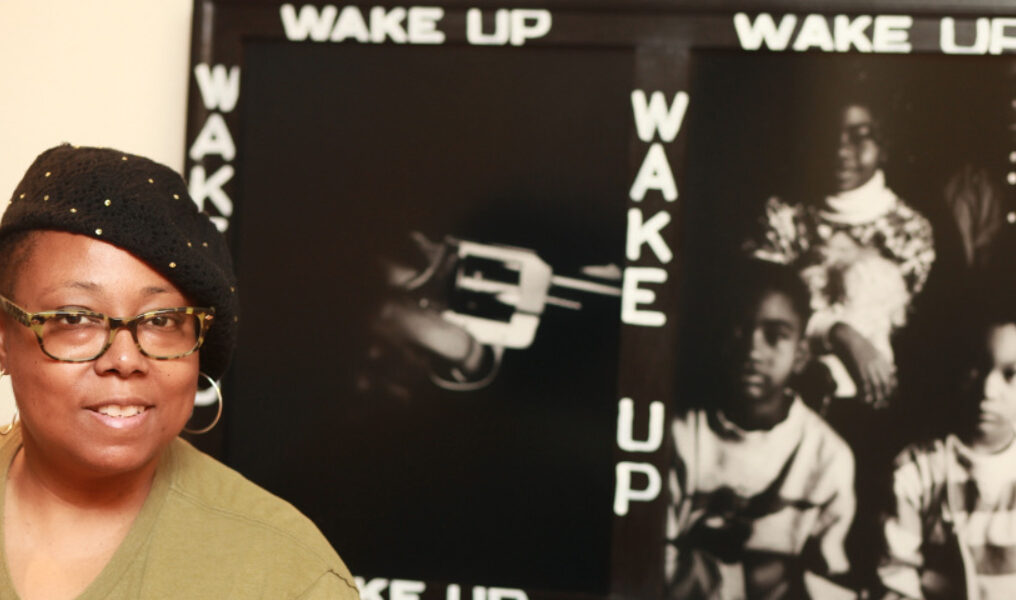Racism, gun violence and human rights violations; unless those are issues faced in their daily life, it's unlikely that the average American chooses to face them head-on. Detroit-born artist Charzette Torrence decided to change that. The product of decades of work, in her newest exhibit she displays issue-specific photographs — like a kneeling Colin Kaepernick or float of Donald Trump — and painted key words that border the images to elicit various themes. All of this is presented large, on framed, 46-by 32-inch billboards in stark black and white to point directly to some of America's most difficult issues. The exhibit's name, "Prevalent," isn't accidental either.
"These things have risen to the forefront. They've been known but silent, but now they're loud," Torrence said. "We look and we see it, but now it's heavy on everyone's hearts and minds. It's like we're at the boiling point and I think everyone can relate to them."
Recently picked up and presented at Spectrum Miami, a curated contemporary art show, Torrence's work is a part of Art Basel, a Miami exhibition that focuses on artists from across the globe, and has shown thousands since its inception. Redwood Media Group — the organization that helped distribute Torrence's work — chose it because of its direct spotlight into difficult issues. In an email correspondence, Torrence said that the media group's Director of Exhibitions Rosana Rader and Community Relations Manager Kelly Smith saw the work as "powerful."

"And insightful in adding a new style of art that would make a change not only in the world of art, but spark conversation for a social change," Torrence wrote. "I would like to thank the Redwood Media Group and (the group's president) Eric Smith for having me as a New Rising Artist."
However, as responsive as galleries and museums are now to displaying Torrence's hard-hitting pieces, when she first gathered the idea together in the early '90s she said the response was largely negative.
"I started this in 1993 and I left it alone. It went to storage but I felt that I wanted to create more because there was more stuff to talk about in the world," Torrence said. "Everyone liked it but they all said, 'We can't exhibit this. This is too much.'"
Though now Torrence is nearing a dozen finished pieces, she hopes one day to have closer to 50.
"There are so many things that can be talked about," she said. "The original point of this exhibit was really an installation. In the original exhibit I would put clear transparencies of news articles of what is going on in the world and then images, but people wouldn't look at the images."
Now, with the large images, stark contrasts and key words, it's harder for onlookers to miss the message Torrence is trying to convey. Torrence takes care to size each photograph and to handcrafted each frame. Though now a New York City-based artist, Torrence said that she's always felt that Detroit was her true home. She originally got the idea while still at school at the College for Creative Studies.
"I couldn't afford many materials, so I had to use what I had at home like egg cartons and wooden moldings," she said. "I couldn't afford frames, so I made my own frames. I custom-built each by myself."
Sometimes, the frame-building, painting and picture-sizing process could take weeks or even longer. The only exception to Torrence's black and white color scheme is her Detroit-specific work that honors Aretha Franklin. A longtime fan and friend of Franklin's family, Torrence said that on the eve before her death she got a feeling that she wouldn't make it to morning.

"It's strange, on Aug. 15, I knew that she was transitioning and my wife's like, 'Why are you so sad? Why are you playing her music now?' And I said, 'She's not going to make it. By the time the morning comes she's going to be totally gone.' I had started that week designing the wooden frames on the computer and black just didn't work for her," Torrence said. "I said, 'Aretha, what color do you want?' This was right before she passed, and her spirit said gold and red. And when she passed what was her coffin? Gold. And she was in a red dress. That came from her before she passed. That's what she told me and the universe told me that night, and the words came that night."

Perhaps it is fitting that this piece, the only commemorative one of the bunch, should stand out in gold. Torrence said that because of its uniqueness she intends to donate it to charitable causes in Detroit, along with her piece on Kaepernick, which she hopes to donate to a cause he supports.
"We have to give back to our community and I'm always going to give back to my hometown, Detroit, period. I was raised by a steelworker mom. Give back, no matter what little you have," Torrence said. "Colin I'm going to connect with him and donate with his organization and I'm reaching out to give to the arts."
It's that spirit of community support and giving that Torrence hopes to spread by making people more aware of the issues she's chosen to talk about in her work.
"The stuff is simmering over. … Now as Americans we really have to improve ourselves because we are all one people. We have the same blood, we breathe the same air and we need to realize that," she said. "All the problems that we haven't solved, we need to do action toward (them)."
To find out more information about Torrence's work and future exhibits go online to Charzette.com.










